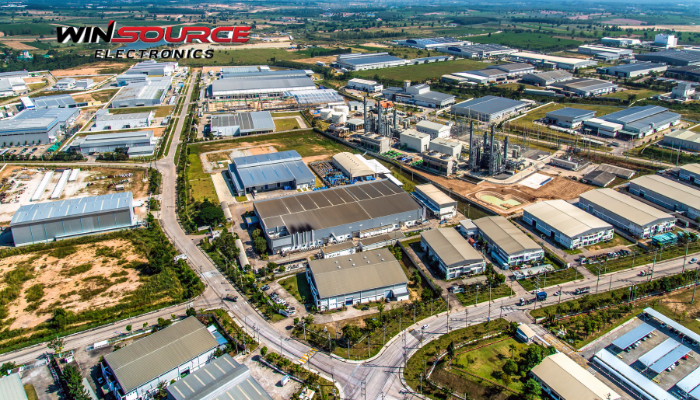
*Image from the internet; all rights belong to the original author, for reference only.
Foxconn Invests in a New Factory in Vietnam
On June 17, 2024, Foxconn, one of the world’s largest electronic manufacturing service providers, announced that it will invest $383 million in a new printed circuit board (PCB) factory in Vietnam. This move aims to enhance Foxconn’s production capacity and optimize its global supply chain layout to cope with the increasingly complex international trade environment and changing market demands. Foxconn’s new factory is expected to be completed within the next 18 months. After completion, it will take an estimated 6 months for equipment commissioning and trial production. Therefore, from the start of construction to full-scale production, it will take approximately 24 months. This means that if everything goes according to plan, the new factory will begin full production by mid-2026. This decision is significant not only for Foxconn itself but also for its major customers and the entire electronic components industry. Below is a detailed Q&A analysis of this investment.
Q1: What does this investment mean for the global electronics industry?
Foxconn’s investment in a new PCB factory in Vietnam has a profound impact on the global electronics industry. This move not only enhances Foxconn’s production capacity and supply chain flexibility, reducing reliance on a single country, but also improves the stability of the supply chain. Major Foxconn customers such as Apple, Dell, and HP will directly benefit from this change as they will be able to secure core components more reliably and have stronger capabilities to respond to market fluctuations. For instance, Foxconn supplies more than 50% of Apple’s components, and this investment will ensure the continuity and stability of iPhone production.
Q2: What key electronic components will Foxconn’s new factory in Vietnam produce? How will the supply chain of these components be affected?
Foxconn’s new factory will primarily produce printed circuit boards (PCBs), which are critical components in electronic devices. The factory is expected to produce 2.79 million items of PCBs annually, equivalent to 2,989 tonnes, significantly increasing market supply and alleviating the global PCB supply shortage. For example, the PCB model HDI-4303 used in Apple’s iPhones and the MB-1560 used in Dell laptops will see a substantial increase in supply. Additionally, as PCBs serve as carriers for chips such as Qualcomm‘s Snapdragon 888 and Intel’s Core i7-11800H, the increased supply will ensure the stable availability of these key components. PCB shortages have previously caused delays in new product releases for several brands, and this investment will significantly mitigate such issues.
Q3: How will the increased capacity of Foxconn’s new factory affect the expected production quantities and specific component models?
The commissioning of the new factory will significantly increase Foxconn’s production capacity, with an expected annual output increase of 30%. Specifically, the production volume of PCBs for iPhones (such as HDI-4303 and MB-1900) will increase from 200 million to 250 million units. The production volume of PCBs for Dell and HP laptops (such as MB-1560 and LB-2100) is expected to increase by 20-25%. Additionally, the demand for automotive electronics PCBs (such as the APC-3400 used in Tesla Model 3 and the BYD-5000 used in BYD vehicles) will increase, with an annual supply growth of 40-50%, ensuring the rapid growth needs of the new energy vehicle market. For example, Tesla is expected to have an additional production demand for 200,000 Model 3 units in 2024, requiring a large number of high-quality PCBs.
Q4: What specific impact will Foxconn’s new factory have on supply lead times and product prices?
The establishment of Foxconn’s new factory will significantly shorten supply lead times, with delivery times expected to decrease by 30%. Vietnam’s geographic location, close to other Southeast Asian manufacturing hubs, will accelerate supply chain response times. For example, the production cycle for iPhones and other smartphones will reduce from an average of 8-12 weeks to 6-9 weeks. Additionally, Vietnam’s low labor costs will reduce production costs by 15-20%, which may lower end product prices by 5-10%, such as for Apple and Samsung smartphones. For example, the average manufacturing cost of an iPhone in 2023 is $400, which is expected to drop to $340-360 once the new factory is operational.
In-depth analysis of Foxconn’s investment in a new factory in Vietnam shows that this decision not only enhances Foxconn’s competitiveness but also brings new development opportunities to the global electronic products market. Specifically, this investment alleviates the tight PCB supply situation, directly reduces the cost of various electronic products, improves supply chain response speed, and meets the growing market demand.
© 2024 Win Source Electronics. All rights reserved. This content is protected by copyright and may not be reproduced, distributed, transmitted, cached or otherwise used, except with the prior written permission of Win Source Electronics.

COMMENTS